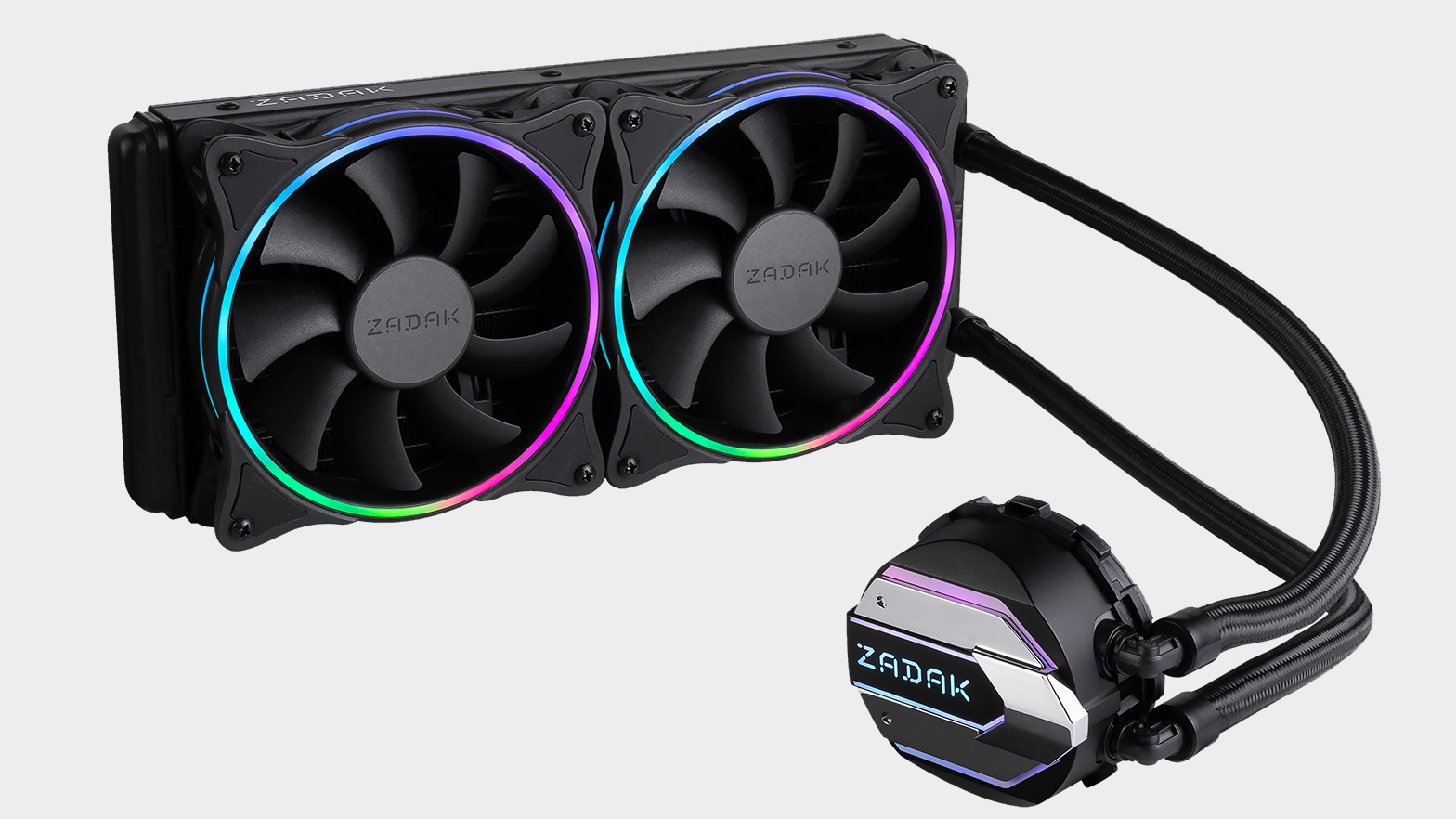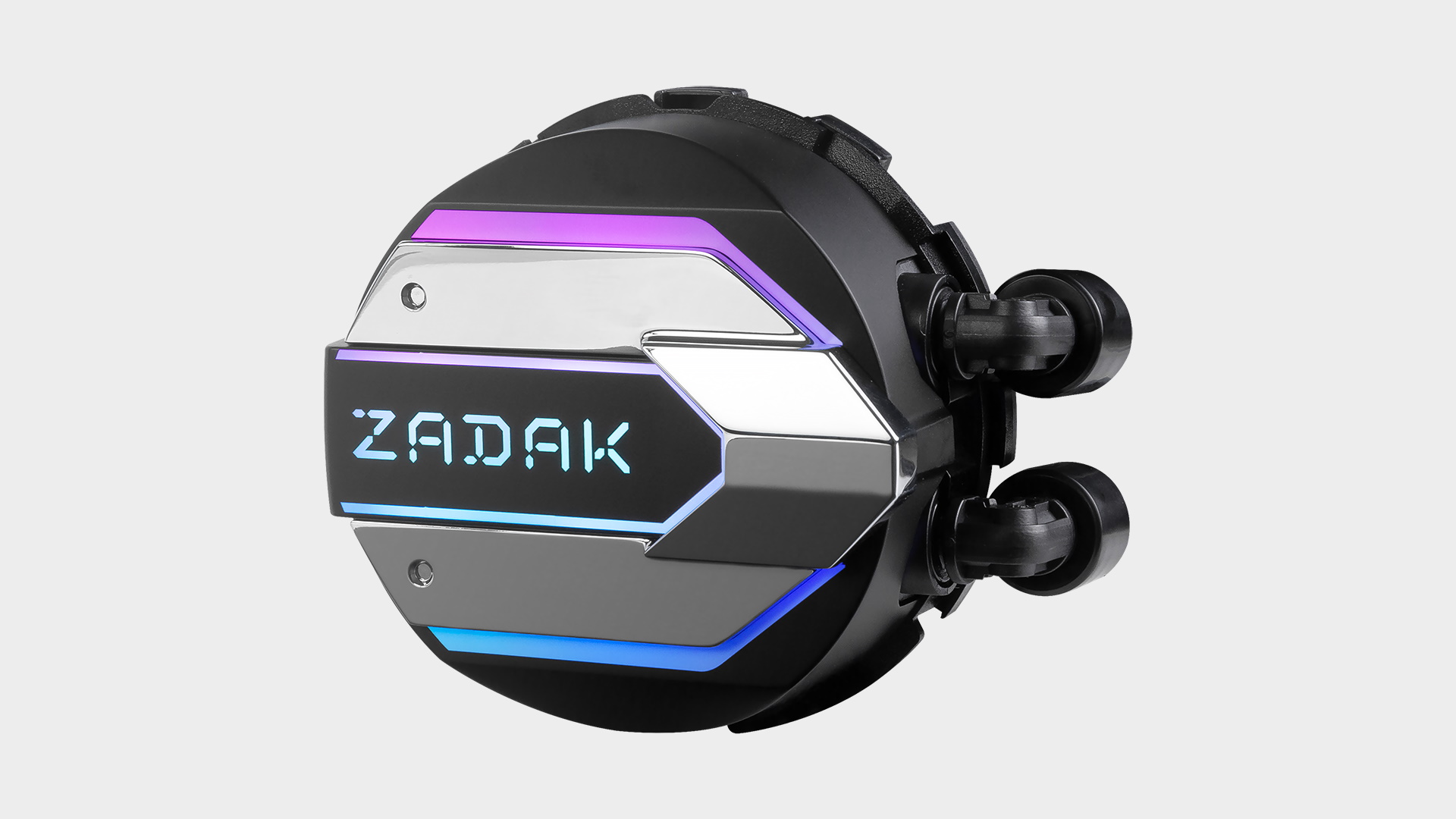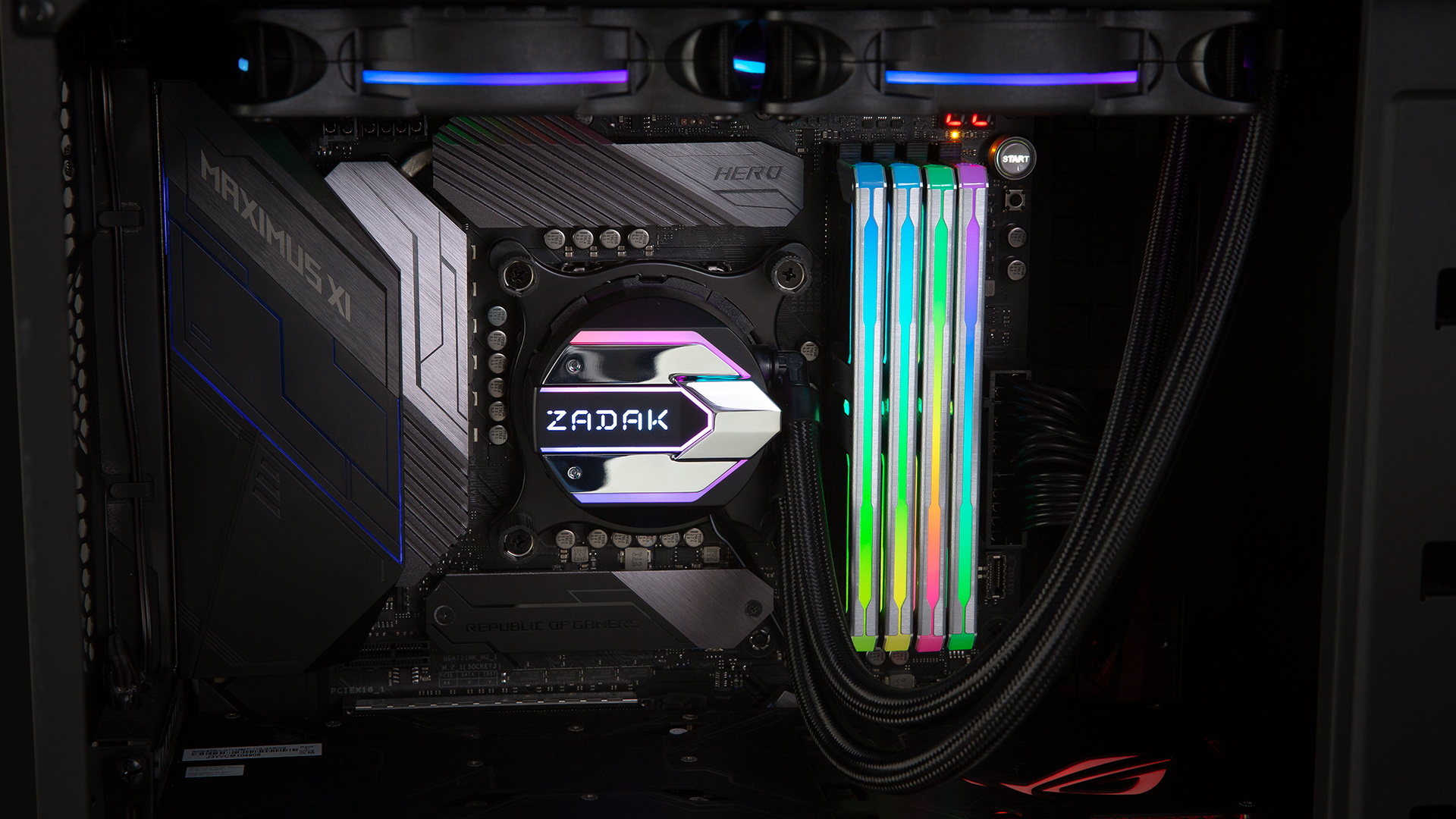
The Zadak Spark AIO is the company’s first CPU cooler. And though Zadak probably isn’t a name many will be familiar with, don’t read too much into that: New doesn’t mean bad. Zadak is a relatively small operation that has a clear passion for quality, as anyone who has used its RAM will testify to. And having used this cooler for a few months now, there’s no questions that this is a well-built piece of kit.
On paper at least, the Zadak Spark AIO doesn’t seem too outrageous an offering. You get a pump block to slap on top of your CPU with a pair of hoses connecting this to the healthy-looking 240mm radiator, two of Zadak’s own 120mm fans to screw onto this radiator, sprinkle on a little addressable RGB and you’re done. That essentially is all the Spark AIO is, which makes its current $210 price tag a little hard to swallow.
To be fair to Zadak that isn’t the official MSRP, which at $159 puts it at the higher end of 240mm AIO coolers spectrum, but not outlandishly so. $210 is a different matter though, and it’s essentially far too much. This could just be down to demand right now, or it could be a supply problem, either way, Amazon is the only supplier that has it right now, so your buying options are limited.
Availability and pricing aside, there are plenty of positive things to say about the Spark AIO: It looks good, is relatively easy to install, and it does a decent job keeping your CPU cool. It can be a bit loud under full load but at normal workloads, it’s discreetly quiet.
It supports all the chips you could throw at it, which is good to know. This is a cooler that can stay with you as you upgrade your system, although you are going to need some more thermal compound as you don’t get any extra in the box (it comes with thermal paste pre-applied to the pump block).

The installation is straightforward enough, with the cooler using the traditional locking ring mechanism to hold the pump block in place. This can be a little tricky to orientate the first time, as the hoses tend to give the unit a mind of its own as you’re trying to get it in place. The good news is that the tool-free locking nuts for this ring are big enough and easy enough to screw into place, although as ever it’s much easier to do this with the motherboard out of your case rather than in it.
The radiator assembly is also straightforward: screw the two Zadak fans onto the radiator and then attach the radiator to your case. There were no obvious problems here, although you need to be mindful of the fan cables, as there are ARGB and power cables for each fan, and these will need routing in your case to stop them getting in the way of proceedings.
The pump block also has a pair of cables—one to provide power to the pump and the other for controlling the RGB touches on the block itself. Zadak includes a controller hub in the pack, which helps ensure that your system lighting is synchronized. It does make for a lot of cables overall though, and you’re going to need some creativity when it comes to routing them all.

In operation, I found the Spark AIO performed well and did a good job of keeping temperatures at reasonable levels across a range of chips and setups. However, when said chips are pushed hard, the temperatures and noise levels aren’t quite so impressive.
It’s the cooler I’ve used for the Zen 3 CPU launch, and it has performed well enough for the most part. Topping out at 81°C with the 105W 5900X is reasonable, although the 5800X hit a more uncomfortable 90°C. The 65W 5600X meanwhile hit 58°C at full load, where for comparison the bundled Wraith Stealth cooler sits at 72°C. These figures were recorded while running the exacting X264 v5.0 video encoding benchmark.
The ARGB lighting works well when using the included hub, although you may want to check your motherboard’s manual for compatibility if you want more control over the overall system lighting. It’s a shame there aren’t more connectors for the controller so that you could connect all of your case fans off the unit, but if you’re going for the full bling treatment, you probably want a standalone ARGB controller anyway.
Overall, the Zadak Spark AIO 240 is a quality cooler that performs well and looks good but doesn’t really do anything to stand out from the crowded marketplace. At its current list price, it’s simply far too expensive, and even if you saw it at its MSRP it’s not a must-buy—ideally, you’d want to spend no more than $130–$140 on it.
This is Zadak’s first attempt at an all-in-one cooler though, and that bodes well for the future. They’ve done a lot right here. It’s not perfect, but it’s a good place to build from. Better fans could make a big difference, and there’s room for a few tweaks here and there too. As it is, this is a decent cooler with a healthy five-year warranty, that doesn’t quite do enough to impress.







More Stories
Doom Eternal review
Review: The Last of Us Part II complicates the idea of right and wrong
Dirt 5 review